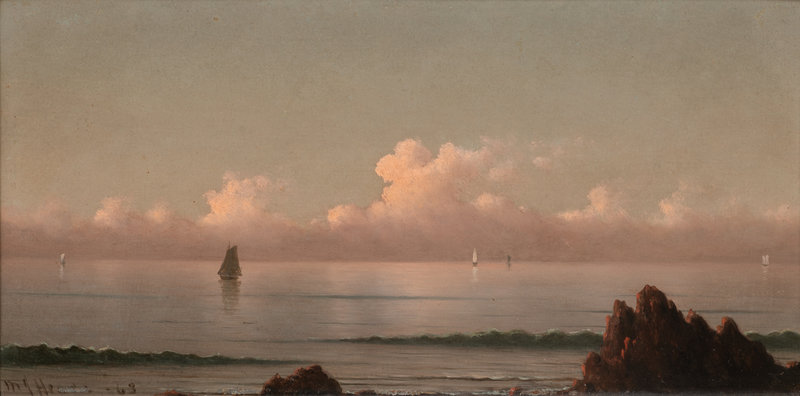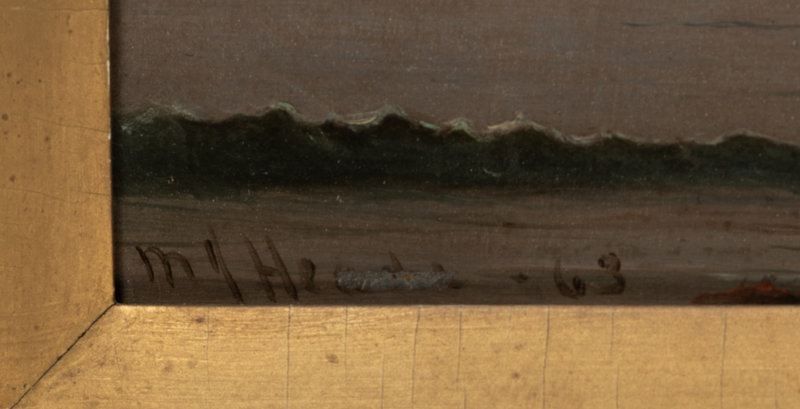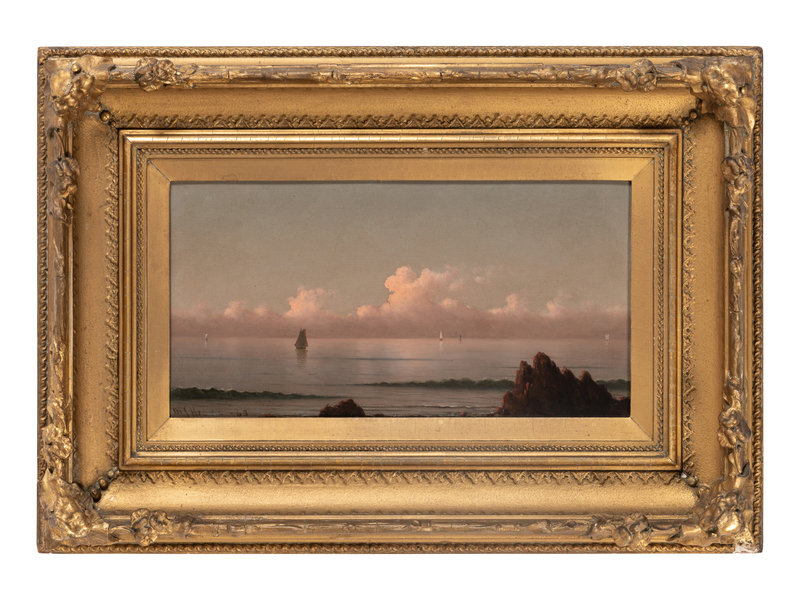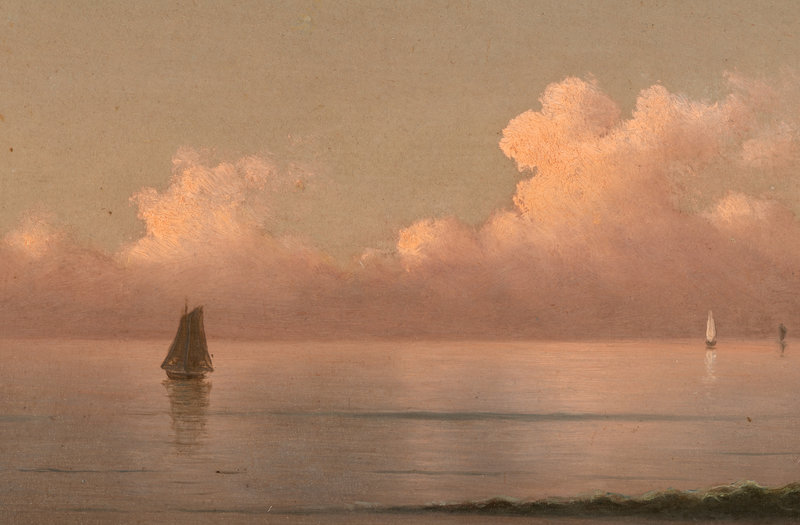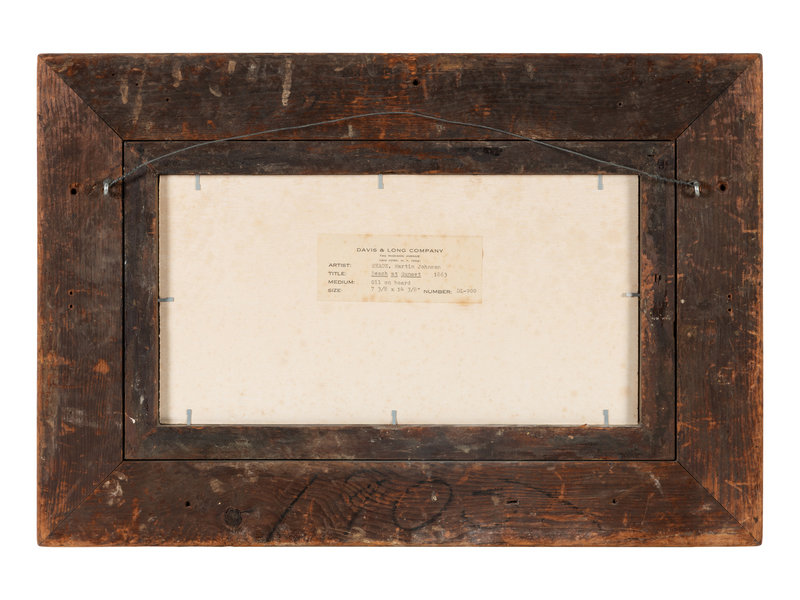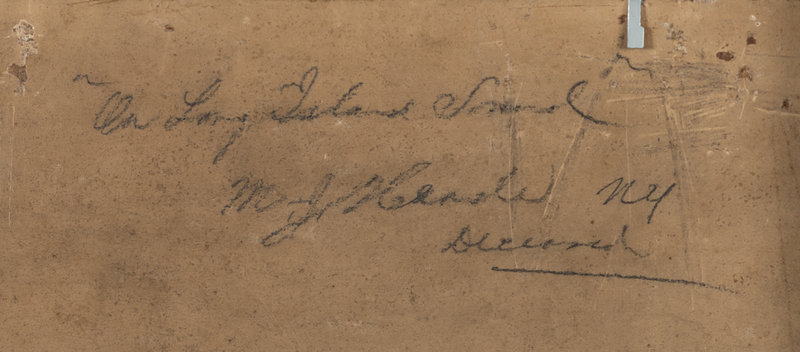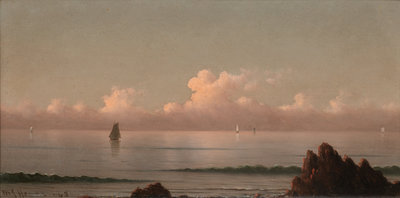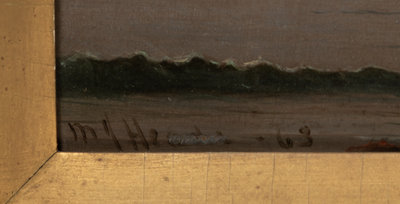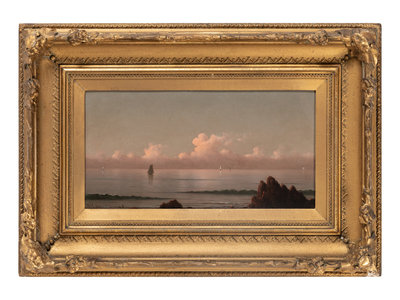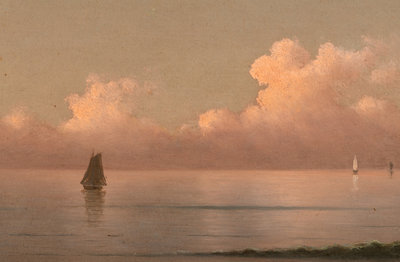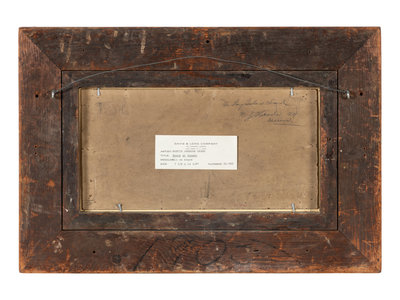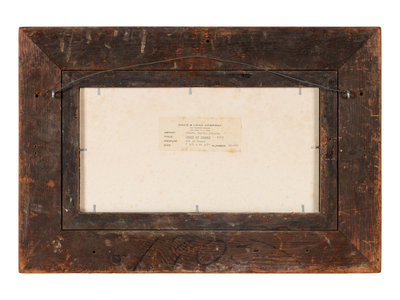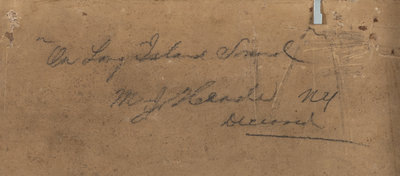Lot 45
This lot will be included in the forthcoming supplement to Theodore E. Stebbins, Jr.'s catalogue raisonné of the artist's work. This artwork retains its original frame.
Provenance:
Dr. William Voorhees Colfer (1908–1976), Norwalk, Connecticut (in whose family the painting is said to have descended)
Estate of the above, until 1977
Davis & Long, New York (as Beach at Sunset)
Acquired from the above by the present owners, 1977
Exhibited:
University Park, Pennsylvania, The Pennsylvania State University Museum of Art, Bellefonte Collects, August 13 - October 22, 1989, no. 13, p. 16, illus. (as Beach at Sunset)
Lot note:
Among prominent mid-nineteenth century American painters, Martin Johnson Heade was probably the most intimately attentive to nuances of climate and environmental biodiversity, whether in his images of eastern wetland marshes (which make up one-fifth of his output), still lifes of orchids, Brazilian hummingbirds in their natural habitats, or atmospheric marine and coastal views. Belonging to this last category, the present painting, signed and dated “1863,” has newly come to light. The painting will be included in the next edition of Theodore Stebbins’s catalogue raisonné of Heade’s work. Stebbins believes the painting to be a finished work rather than an oil sketch. He states in a letter accompanying the painting: “In 1862 and until September 1863 when he left for Brazil, Heade was living in Boston doing numerous marine pictures along the New England coast including Newburyport, Massachusetts; Rye Beach, New Hampshire, and Penobscot Bay, Rhode Island.” The painting is inscribed verso (not in the artist’s hand), “On Long Island Sound,” which Stebbins notes is “not an unreasonable guess because there are some related Long Island Sound views from 1875–76, but the location seems inaccurate.”
Heade’s initial seascapes, influenced by those of his close associate Frederic E. Church, whose work he came to know while living in New York’s Tenth Street Studio building from November 1858 through June 1860, often featured approaching thunderstorms, storm-tossed waves, sunsets, and darkening skies in open-ended panoramic compositions. He also began to create more quiescent, light-filled shoreline views, in the mode of the Luminist-Transcendentalist images of John Frederick Kensett, Francis Silva, and Sanford Gifford, but with a softer, more mystical light, sharing, as noted by Stebbins, with the work of the German romantic landscapist Caspar David Friedrich “a sense of loneliness and isolation.” An example is Dawn, 1862 (Museum of Fine Arts, Boston). In 1863, a new clarity along with a calmer, more cheerful mood suggests that Heade became familiar at the time with the work of the Gloucester, Massachusetts, painter Fitz Henry Lane. An article in the Boston Evening Transcript on August 12, 1863, announcing Heade’s imminent departure for Brazil, described him as “the artist so well known for his landscapes, with rich sunsets and sparkling stretches of ocean.”
Such a description fits this work of Luminist mist and stillness, in which the sunset light, gathered in the dense atmosphere along the horizon line, is reflected across a glassy sea. Sailboats still on the water suggest that nightfall is not imminent, conveying a sense of unhurried, suspended time on an early summer evening. In the foreground, rock ledges echo the shapes of the cumulus clouds, still infused with the sun’s afterglow. Pointing upward and catching some of their light, the outcroppings at the shore evoke the solitude of works by Friedrich. In his letter, Stebbins comments: “This is a lovely little picture, with sophisticated use of related grays and gray greens in the water and sky. The haze on the horizon is effective, and the pink sky is typical of this period.”
Lisa N. Peters, PhD
